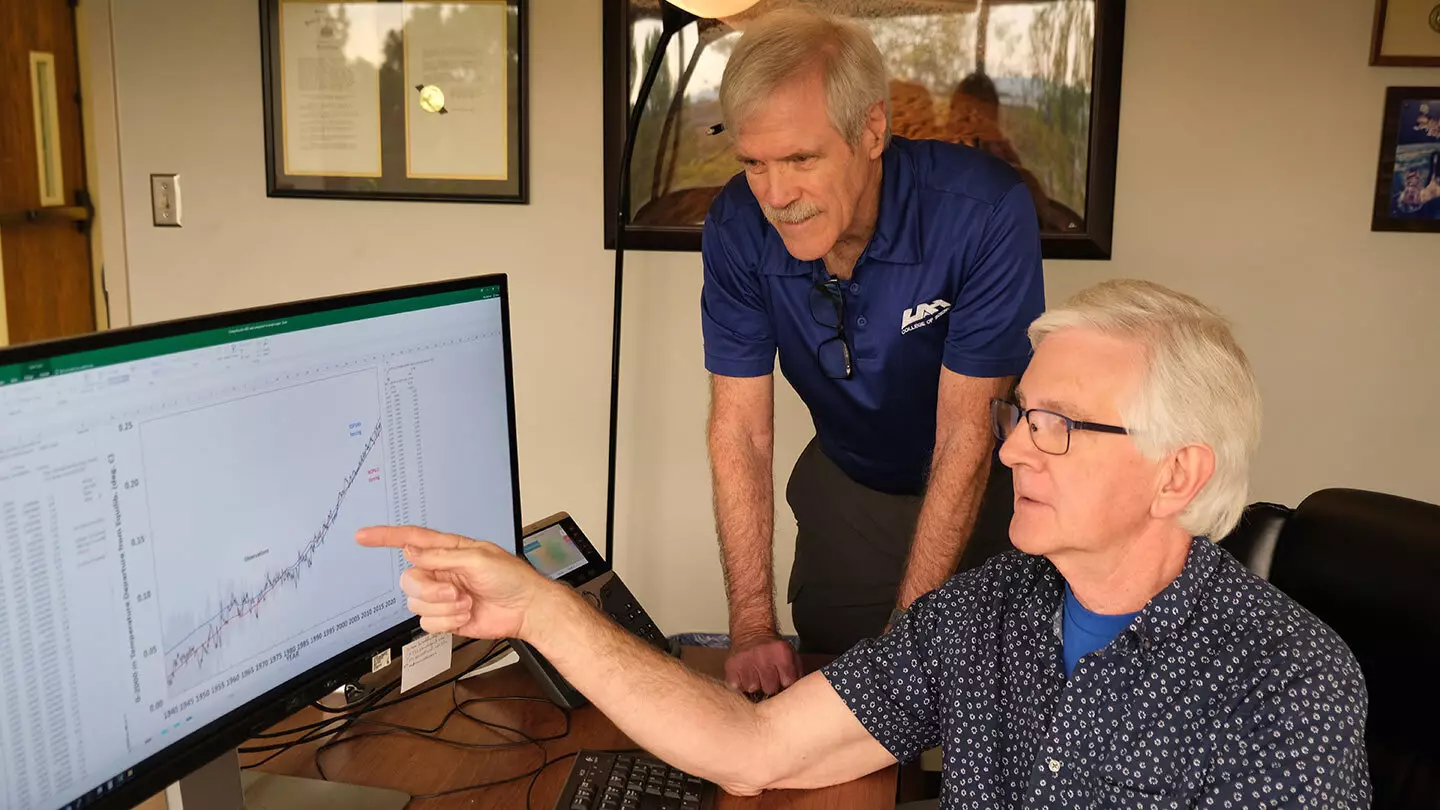In a groundbreaking new research study conducted at The University of Alabama in Huntsville, Dr. Roy Spencer and Dr. John R. Christy have raised serious questions about the widely accepted notion that carbon dioxide is the primary agent responsible for global warming. Published in the September 2023 issue of Theoretical and Applied Climatology journal, their study challenges the mainstream climate change narrative by presenting a one-dimensional climate model that offers a significantly lower estimate of the warming potential of carbon dioxide. This article critically examines the research and its implications for our understanding of climate change.
For decades, climate scientists have relied on complex computer models to estimate the impact of carbon dioxide on global temperatures. However, as Dr. Spencer notes, these models have consistently failed to reach a consensus, with estimates ranging from 1.8 to 5.6°C for the warming caused by a doubling of atmospheric carbon dioxide. This wide range of values has fueled skepticism among some scientists and policymakers about the severity of climate change and the urgency of mitigation efforts.
Dr. Spencer and Dr. Christy’s research introduces a novel approach to climate modeling. Unlike previous models that rely on theoretical assumptions, their one-dimensional climate model is driven by actual observations of warming. By analyzing datasets of warming between 1970 and 2021, the researchers were able to estimate climate sensitivity based on energy conservation principles. Their findings challenge the prevailing narrative by suggesting that the warming effect of carbon dioxide may be significantly lower than previously thought, with an estimated value of 1.9°C.
One of the key strengths of the UAH climate model is its incorporation of deep ocean warming data. Unlike other models that disregard heat storage in deeper layers of land, Spencer and Christy’s model takes into account this critical factor. By doing so, they provide a more comprehensive understanding of how the climate system responds to increasing greenhouse gases. This inclusion of often overlooked variables sets their research apart from previous studies and challenges the dominant scientific consensus.
Another crucial aspect of Dr. Spencer and Dr. Christy’s work is their acknowledgment of the potential influence of natural climate variability. While many climate models assume that all climate change is primarily human-caused, the UAH climate model considers the possibility of natural factors contributing to recent warming trends. This recognition opens up a new avenue of inquiry and suggests that the climate sensitivity estimates of previous models may have been inflated.
One of the strengths of the UAH climate model lies in its simplicity. The researchers emphasize that any physics-based model of global warming should prioritize the conservation of energy, a criterion often overlooked by current computerized climate models. By developing a model that adheres to this fundamental principle, Dr. Spencer and Dr. Christy set a new standard for future climate research. Their model’s simplicity also allows for easy adaptation to updated or improved global temperature measurements, ensuring its continued relevance in an evolving scientific landscape.
Spencer and Christy’s research challenges the prevailing consensus on climate change by presenting a one-dimensional climate model that offers a much lower estimate of the warming potential of carbon dioxide. This finding has significant implications for climate policy and future research endeavors. While further investigation is needed to validate their findings and address potential limitations, their work provides valuable insights into the complex nature of climate change.
The study conducted by Dr. Roy Spencer and Dr. John R. Christy represents a critical milestone in climate change research. By challenging the prevailing narrative surrounding the role of carbon dioxide in global warming, they have opened the door to new perspectives and avenues of investigation. While their research requires further scrutiny and validation, it serves as a reminder that scientific inquiry should always remain open to critical analysis and revision. The quest for a better understanding of climate change continues, and this study represents a significant step forward in that ongoing journey.


Leave a Reply